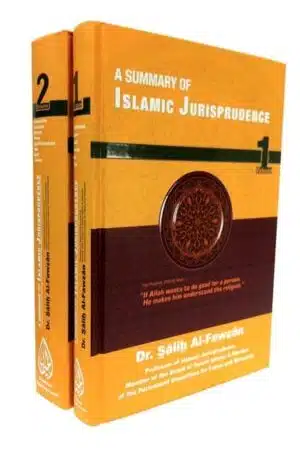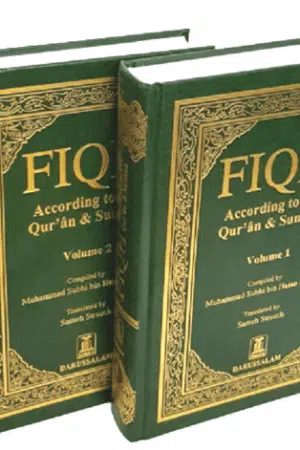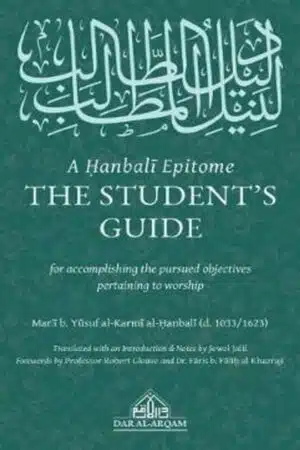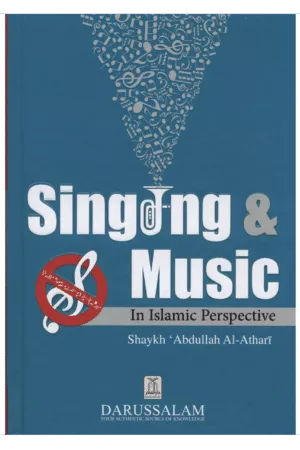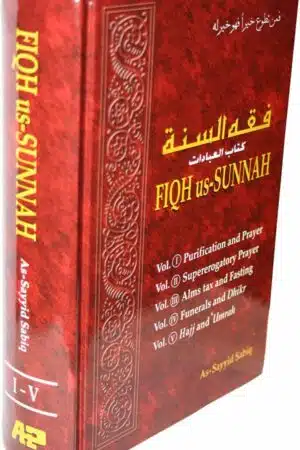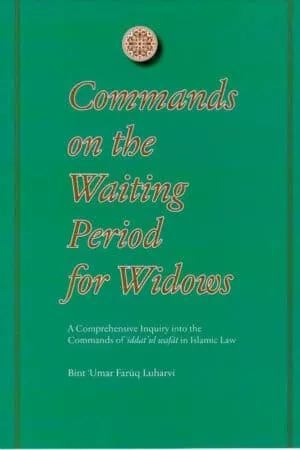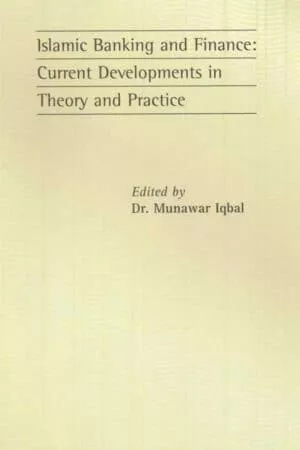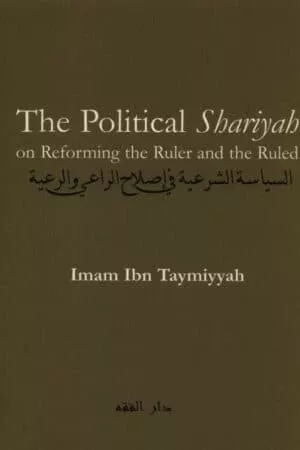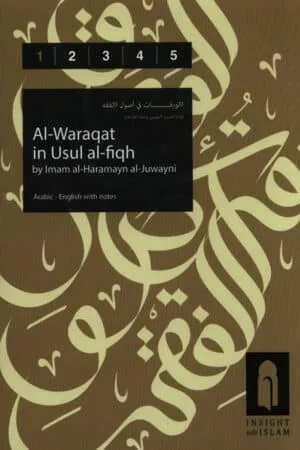Usul al-Fiqh
349 kr
| Författare: | |
|---|---|
| Utgivare: | |
| Bindning: |
Hårdpärm |
| Vikt | 1111 g |
| Vol: |
1 |
Slutsåld. Leverans inom 10–45 dagar efter beställning in shaa Allah!
Usul al-Fiqh : Is a work in English on the Principles of Islamic Jurisprudence compiled by Dr. Muhammad Fawzy Abdelhay of Al-Azhar University, Egypt.
This study is an examination of the rise, developments, methodologies and literature of Usul al-Fiqh in the Islamic culture from its early beginning to the recent time. It will provide Usul readers, teachers, novices and researchers with helpful in depth material to read on the early beginnings of Usul, phases of Usul developments and methodologies.
Outline :
The book consists of an Introduction and five Parts (sections; containing numerous chapters). The Introduction highlights the rise of the art of jurisprudence in terms of figures and locations, and focuses on the importance of this study.
The First Part covers the terminology of the book and discusses the early beginnings of the discipline of Usul. It begins with a preliminary chapter presenting some necessary articles that discuss the main concepts for this research and defines the study central terms such as Manhaj, Usul, Furu and Qawa’id.
It also proves the originality of Usul al-Fiqh and examines the relationship between Usul and the Roman laws. These introductory articles also highlight the difference between Usul and fundamentalism (Usuliyyah) and outline the rise of scholastic trends and juristic attitudes in Usul. It also reveals the gates through which the process of ’Kalamising’ Usul al-Fiqh took place and gives short notes on the doctors of theology, who left their impact on Usul at this early phase.
In the second Chapter it goes onto to discuss, the early seeds and ideas of Usul in the Glorious Qur’an, the honourable Sunnah, and the practices of the Sahabah, (Prophet’s, ?, Companions). The third Chapter focuses on differences between the Sahabah, their impact on the progress of laws, and cites some documents of the early Usuli scripts reported from the Sahabah. The fourth Chapter then elaborates on the developments of Usul during the era of the Tabi’un (the successors of the Prophet’s, ?, Companions) and Imam’s of law regarding the famous sources of law such as the views of Sahabah, Ijma’ of Medina, Istihsan, and ’Urf. At the end of this Chapter, the study presents a translation of some early documents on the Usuli material.
The Second Part has four Chapters. The first is devoted to the phase of founding the discipline of Usul. It discusses the various views on the first writer of the art, the reasons leading to its birth, and the role and impact of Muhammad ibn al-Hasan and his writings on the rise of Usul. The second Chapter discusses the birth of Usul at the hand of Imam ash-Shafi’i, may Allah be pleased with him, in his treatise ar-Risalah; the life, components and background of the founding father of Usul and the special faculties and abilities he had to initiate this discipline.
The third Chapter observes the developments of writings in terms of topics, style and literature during the era that followed the death of Imam ash-Shafi’i. It presents a survey and analysis of the literature of the third century and cites two famous writers and some of their Usuli opinions. The fourth Chapter discusses the progress and development of Usul at the fourth century. It also presents a list of Usuli production and analyses two works of this century written by Imam ash-Shafi’i, a Hanafi scholar, and by ibn al-Qassar, a Maliki scholar.
The Third Part deals with the phase of systematic construction, amalgamation and refinement of Usul. It has two Chapters; the first presents a suvey and analysis of the developments of Usuli literature during the fifth century.
The second Chapter investigates the developments of Usuli during the sixth century. It also summarises the influence and importance of Imam Abu Hamid al-Ghazali, may Allah be pleased with him, and presents a short analysis of source and methodology in his seminal work ”Al-Mustasfa min ’Ilm al-Usul.”
The Fourth Part deals with the interpretative phase where commentaries and marginalia dominated the Usuli production. The Usuli pandects formed the center of these interpretative works; they were reconciling-oriented works that paved the way for uniting the streams of Usuli works at the modern age. This part has three Chapters; the first chapter discusses the progress of Usul during the seventh and eighth centuries. It presents a survey of the literature of Usul at this epoch and analyses the changes of style and goals of Usuli writing.
Imam as-Subki, may Allah be pleased with him, as one of the most splendid figures, and his book Jam’ al-Jawami’ exemplify the outstanding shape of authorship at this era when Usuli mutun (pandects) appeared. It also presents short examination of the methodology of as-Subki, which marks the methodology of Jam’ or combination school of Usuli writing. The second Chapter discusses the developments of Usul al-Fiqh during the ninth and tenth centuries. It presents a survey of the literature of Usul at this period and observes the cross-schools encyclopedic writings of this era. The work of al-Mirdawi a Hanbali scholar, at-Tahbir, which is a commentary on at-Tahbir, is given as an example of this period.
The third Chapter observes the development of Usuli writings after the tenth century. It presents a short list of literature and highlights the efforts of Usuli reformists to enliven the attitude of as-Shatibi, and renew the material and expand the scope of Usuli studies and concerns.
The Fifth Part elaborates on the various methodologies of Usuli writings, the relative sciences of Usul, and the effects of Usuli methods on modern fatwa. The first Chapter contains numerous sections. The first examines the various methodologies that appeared through the ages in several sections. The first examines the early methodologies of Usuli writing. The second discusses the juridical method of writing and presents the work of al-Bazdawi as an example of this trend.
The third section discusses the method of scholastic theologians. Several examples of this school have been analysed in the study such as al-Irshad of al-Baqillani and al-Mustasfa of al-Ghazali. The fourth highlights some of the most famous differences between the juristic school and the scholastic school. The fifth section presents the Ikhbari school of Usul as it appeared twice in Islamic history; at first in the Sunni realm of the fifth century and later in the shi’ite realm in the eleventh century. Ibn Hazm and his work al-Ihkam stand for this school’s methodology.
The sixth section examines the methodology of takhrij where collections of legal instances submit to exact examination under their relevant jurisprudential rules for better legal aid and easier decision making in future similarities. A list of works composed on this sort of authorship is provided in the text. The seventh section discusses the methodology of the Jam’ and elaborates on the kinds and characteristics of this Usuli method, as the work of Jam’ al-Jawami’ by Imam al-Subki has already been analysed in the Fourth Part. The last section elaborates on the methodology of Maqasid; its rise and development. Al-Muwafaqat of ash-Shatibi is presented as an example of this category.
The second Chapter observes the arts that grew in the shadows of Usul al-Fiqh such as Qawa’id al-Fiqh (maxims of jurisprudence), al-Furuq (nuances between similar terms), the terminology of Usul, and the Tabaqat i.e. classes of Usuli scholars. The third Chapter discusses the concept of fatwa and the necessary conditions for this position, and presents several examples of modern fatwas (legal decisions) and short analyses of the methodologies of Usul that Mufti’s adopted to reach conclusions. Without critical indications, observers of this last chapter would be able to see the role that Usuli vision and methodology constitute in formation of legal decision.
A final short section is devoted to the conclusion and the main recommendations that the researcher deems useful for future activities and advancements in the Usuli field.




